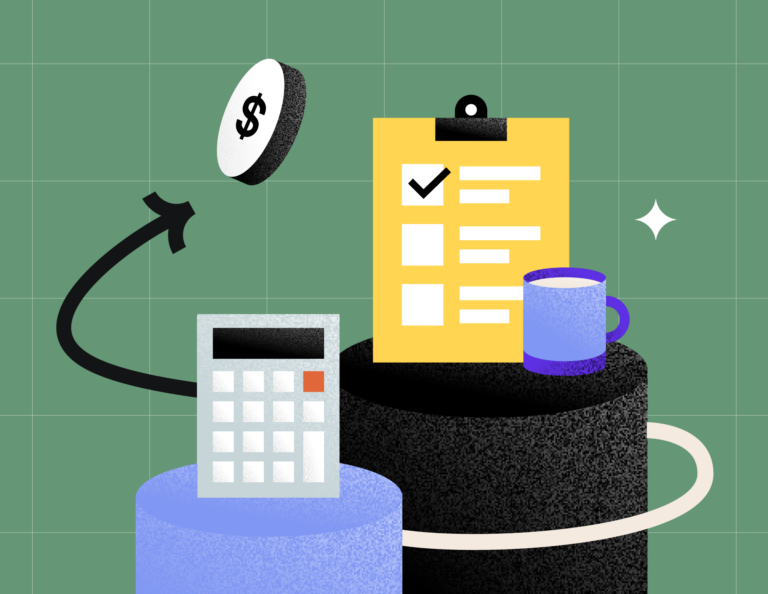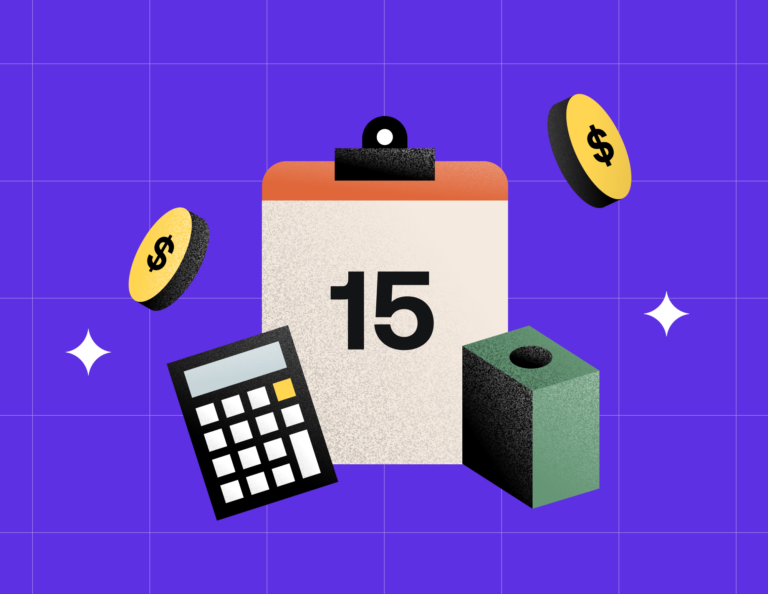Though you’ve started your business to do what you love, you need to learn how to pay yourself as a photographer to keep growing. If we aren’t careful, a lack of knowledge about the financial side of our photography businesses can leave us overworked, exhausted, and clearing a little more than minimum wage.

As a full-time photographer for over eight years now, one of the most common questions I receive from other photographers is, “How should I price my photography business?”
It would be nice if I could reply with a simple answer like “Supply and demand! Charge what clients will pay!” (and this isn’t entirely bad advice…) however, the real answer for your unique business is going to take a bit of work.
Not only do you need to set photography rates that help you book your ideal clients, but you also need to price your services to be able to cover business expenses, pay taxes, and pay yourself an income.
Here’s how to pay yourself as a photographer in the long run.
Jump to:
- Determine your break-even amount
- Determine your cost of goods sold
- Determine how much work you can handle
- Choose your desired salary
- Adjust your business strategy to reach your income goals
- Create a savings strategy for off season
- Using an owner’s draw to pay yourself
- Paying yourself is easier with HoneyBook
1. Determine your break-even amount
Every business has a break-even number: a specific amount of income you must generate every year to cover expenses. To help you find your ‘break even number’ let’s talk about two categories of expenses: fixed and variable.
Fixed costs include any expenses that do not change from month to month.
Examples of fixed costs include:
- Mortgage/rent
- Internet
- Business insurance
- Software subscriptions
- Cell phone
- Car insurance
- Canon Professional Membership
- Domain and blog hosting
- …and more
You might also have the same variable costs each month, but these costs fluctuate from month to month.
Examples include :
- Advertising
- Packaging supplies
- Coffee/restaurant meetings
- Independent contractors/office assistants
- Education/conferences
- Branding/design
- Car maintenance
- Gasoline
On a piece of paper (or in a spreadsheet or software) start a list of your fixed costs every month. If any costs are paid yearly (business insurance, for example) divide by 12 to get your monthly figure. This will make things simpler!
In the next column, write a list of your variable costs for the year. If you have previous data to compare (from your last year in business), estimate your total budget for each category for the upcoming year. Always overestimate your costs! Better safe than sorry.
Once you have your monthly fixed costs, multiply by 12 to find your yearly fixed costs. Add up the variable costs column to find your yearly variable costs. Add the two figures together and now we have your break-even number for the year.

Annual break-even number
Annual variable costs + Monthly fixed costs X 12 + Budget padding
= Break even number
Your photography business will need to bring in more money than this in one year’s time – just to stay out of the red.
2. Determine your cost of goods sold
If you charge $3,000 for a wedding, after paying your expenses, you’re not making $3,000 a wedding. I’m not talking about your break-even number (fixed + variable costs = break-even) I’m talking about the Cost of Goods Sold, or COS (Cost of Sale) for short.
For every wedding collection you offer, make a list of every item that’s included: second shooter, online gallery, client gifts, wedding album, engagement guestbook, etc.
Beside each item, list your actual cost. If the wedding album costs you $500, make a note.
When you have your total COS for each wedding collection, subtract the COS from the retail price of the collection. If you photograph portraits in addition to weddings, follow the same pattern, carefully noting your hard costs in delivering the session.
Using the data you’ve calculated, establish the ‘average’ net income per wedding (essentially your most popular package) and ‘average’ net income per portrait session.
3. Determine how much work can you handle
It’s all great and wonderful to think, “How to make more money? Shoot more!” And yes, if you’re not yet full-time in your business, that should absolutely be your goal through branding, marketing, and active promoting of your business. However, we need to stop and ask ourselves realistically, “How much work can I handle in a year?”
In my personal experience, 20 weddings a year plus about 20 portrait sessions a year feels very full-time to me. For your lifestyle, you may be able to handle 30-40 weddings a year. (Commute time and the amount you travel are huge deciding factors.)
On your piece of paper, write down how many weddings and/or portraits you want to shoot in a year.
4. Choose your desired salary
After you’ve determined how many clients/sessions/projects you can handle per year, it’s time to determine your ideal salary.
To be realistic, think about what you currently make as well as your personal expenses. Also, consider the average photography rates in your area to get an idea of how much other photographers are making.
Pro Tip: Like any other job, you should evaluate your salary each year. Is it time for a raise? Has the market taken a dip? Various factors can affect your income, so take it year by year. Start with what’s realistic for your current year, and always keep your eye on future salary goals.
5. Adjust your business strategy to reach your income goals
Now that you have your break-even number, your COS, your maximum workload, and your salary goal, it’s time to adjust your business accordingly.
Here are some important questions to ask yourself:
- What is your inquiry to booking rate? Are you booking almost every bride that comes your way, or is there room for improvement? If you’re generating enough leads but clients are falling off during your sales process, it’s worth it to gather some feedback and understand what’s falling short.
- How much profit do you typically make per project? If you’re just covering your COS and a little more, it could be time to make a minimal price increase—you’ll be surprised how quickly a $300 increase x 20 weddings adds up!
- Is it possible to stretch yourself to photograph more weddings and/or portraits? If you’re feeling overwhelmed, outsourcing your editing is an amazing way to increase your revenue. (I don’t have time to do the math. But trust me. You could probably pay to outsource the editing for an entire wedding season by shooting 2 more weddings. And what takes more time? Editing.)
- If you’re feeling burned out by shooting, what other streams of revenue can you increase? Could you teach a fantastic skill online or in person for a profit? Can you run a headshot session for local business owners? You can also explore selling digital products based on your knowledge.
6. Create a savings strategy for off-season
The reality of being a photographer is that the job can be very seasonal. I often have four-month stretches in the winter without a wedding but can easily shoot six to seven weddings in one summer month! It all depends on your niche of photography.
But whether you’re dealing with an off-season or not, it’s always important to factor savings into your profit. You never know when something unforeseen can happen or if the economy can have an impact on your business, so having some cash saved up is always a priority.
To save properly, it’s very important to separate your business and personal finances. Treat your business like a business and your own personal finances as if you were an employee of a company. (Even if you’re registered as a sole proprietor.)
Make sure you have a business checking account and savings account set up that are separate from your personal accounts. This will make it easier to save for your business, track your business finances, and complete your tax returns at the end of the year.
7. Using an owner’s draw to pay yourself
When it comes time to pay yourself, you’ll likely take an owner’s draw. This means you can take money out of your business as needed, up to the total amount you put into your business. This option is for sole proprietorships, partnerships, or LLCs.
If your salary looks like it will be $40,000 (before paying income tax of course) – divide this by 24 to find the paycheck amount you’ll pay yourself on the 1st and 15th of every month.
$40,000 / 24 = $1,667
On the 1st and 15th of every month, whether you’re shooting eight weddings in a month or zero, you’ll transfer $1667 from your business account to your personal bank account.
Don’t forget to set aside money for taxes as well. You can set up payments for quarterly taxes or set aside a percentage from every paycheck until the end of the business year. If your income tax was 25%, you’d set aside ($1667 x .25% =)$416.67 from each paycheque.
Paying yourself is easier with HoneyBook
Paying yourself a good salary from your photography business can take trial and error. You may need to adjust your marketing and lead capture, pricing, and booking process to book the clients you need at the prices you want.
To make it easier, use HoneyBook. It’s more than a CRM for photographers, it’s a clientflow management platform. Though you’ll set your pricing strategy, HoneyBook makes it much easier to capture inquiries and convert them into clients, complete with everything you need for booking and scheduling sessions.
Manage payments, clients, and more in HoneyBook
HoneyBook is the clientflow management tool for photographers to keep you organized and help you increase your revenue.
Start free trial


